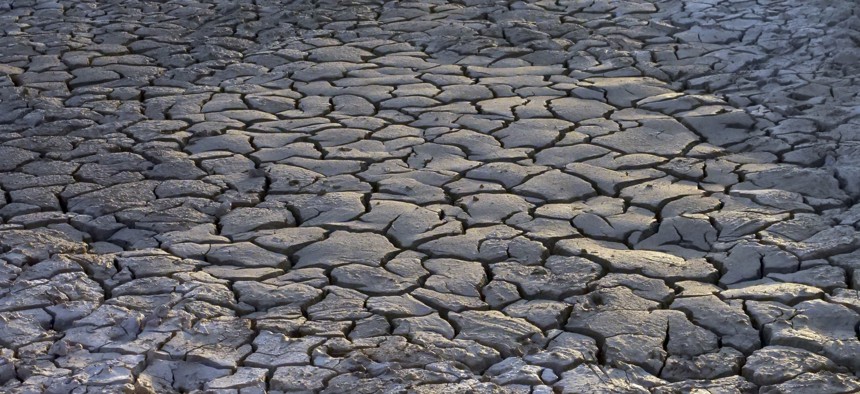Ratings Agency Flags Warming Climate As Issue to Watch for Utah

(AP Photo/Rick Bowmer) In this July 12, 2018, photo, baked earth is shown in a dry watering hole outside Salt Lake City.

Connecting state and local government leaders
The state is currently in the depths of a drought.
Commenting on drought conditions now affecting much of Utah, the ratings agency Moody’s recently drew a connection between warming global temperatures and state credit quality.
Utah Gov. Gary Herbert, a Republican, in mid-October signed an executive order declaring a drought emergency. All of the state’s counties have experienced some level of drought in recent months, with those conditions persisting up through this week.
At the time Herbert issued the emergency order, 16 of Utah’s top 49 reservoirs were less than 20 percent full.
The year-long span between last October and this September was the driest on record in Utah, according to National Oceanic and Atmospheric Administration precipitation data.
Analysts with Moody’s Investors Service say the drought situation the state is now dealing with will not have an immediate effect on its credit quality. But they go on to say that it does highlight “Utah’s vulnerability to drought and its credit-negative exposure to drier conditions in the western US as global temperatures warm.”
Local governments are in a similar boat, the article from Moody’s says, noting “credit-positive economic and population trends are unlikely to be affected by the drought.”
“However, local governments and utilities may face negative credit effects over a longer time frame if the drought continues unabated,” the article adds.
The challenge going forward will be to balance limited water, much of which flows from mountain snowpack into the state’s watersheds, with a growing state population and agriculture—currently the biggest water user in the state.
Population Growth, Pending Pipeline
Utah’s population, now around 3 million, is expected to roughly double by around 2065, according to some estimates.
While the state’s population is growing, irrigation for agriculture has accounted for about two-thirds of the state’s water consumption in recent years. Moody’s notes that farming makes up less than 1 percent of Utah’s gross domestic product.
Utah is currently in the early stages of moving ahead with a project known as the Lake Powell Pipeline, which would transport water to communities in southern Utah from Lake Powell, a reservoir on the Colorado River, on the state’s border with Arizona.
The project would involve about 140 miles of buried pipe and other infrastructure and has an estimated cost of $1.1 billion to $1.8 billion.
State legislation passed in 2006 outlines a framework where the state would provide funding and then local water districts would pay it back, but all of the details of that arrangement are still not finalized.
The project needs to move through a federal permitting review to proceed.
The Utah Rivers Council is among the groups opposed to the project. It argues that there are less expensive options available, that residents in the areas the pipeline would serve could conserve more water, and that the project would reduce river flows downstream.
Bill Lucia is a Senior Reporter for Government Executive's Route Fifty and is based in Washington, D.C.

NEXT STORY: In Less Than 10 Years, America Will Have 17 ‘Superaged’ States





